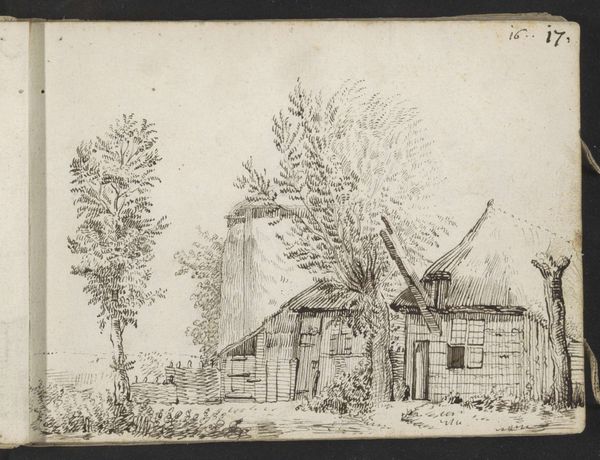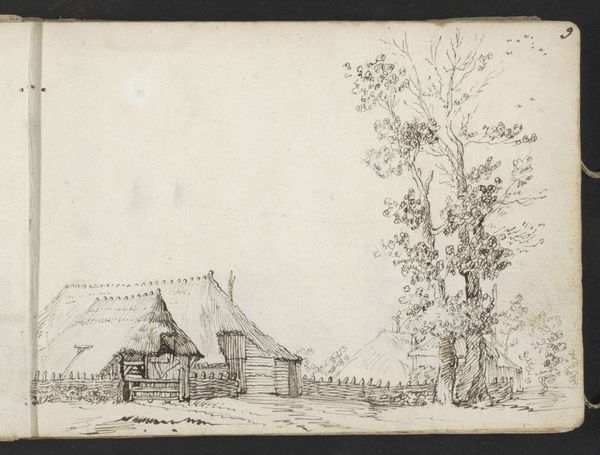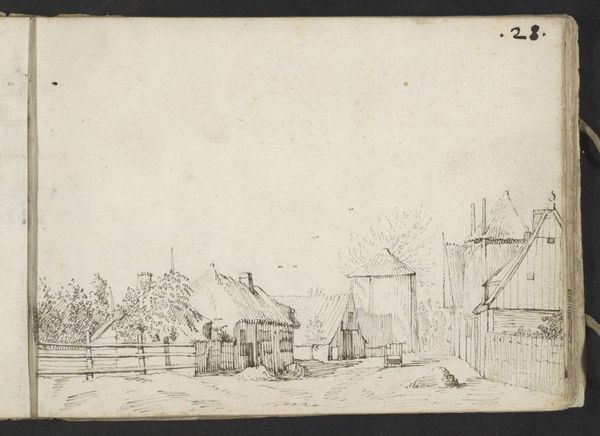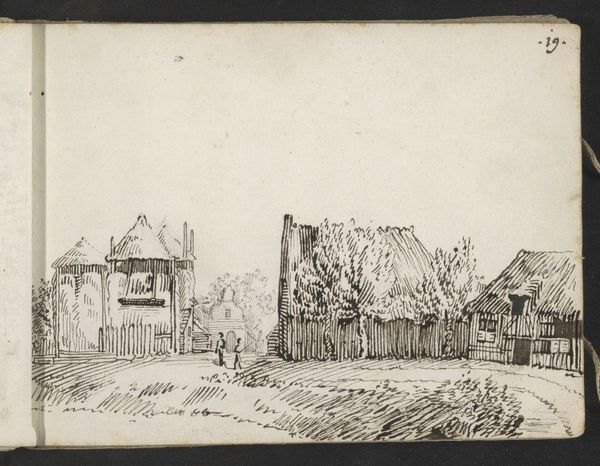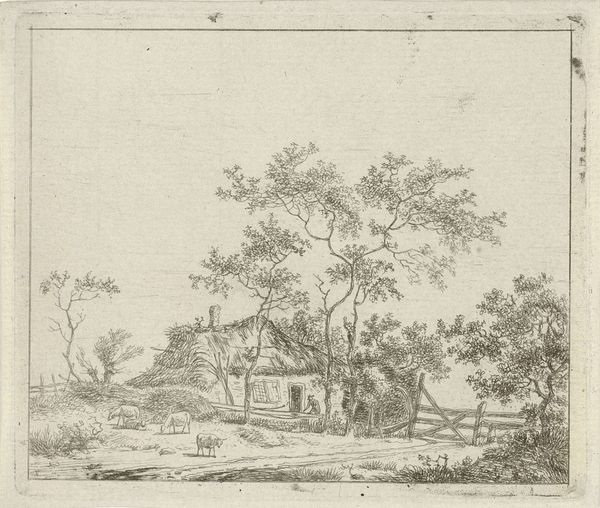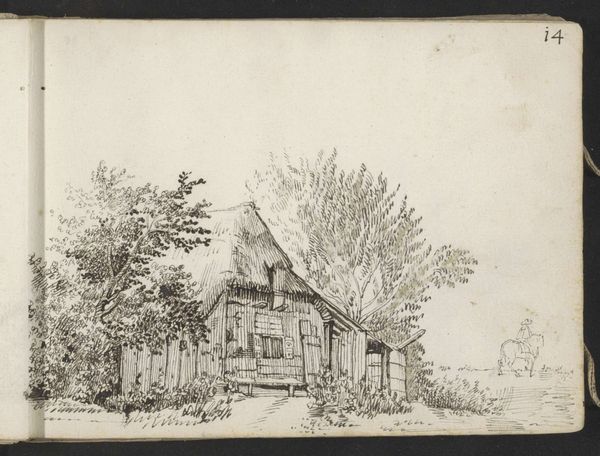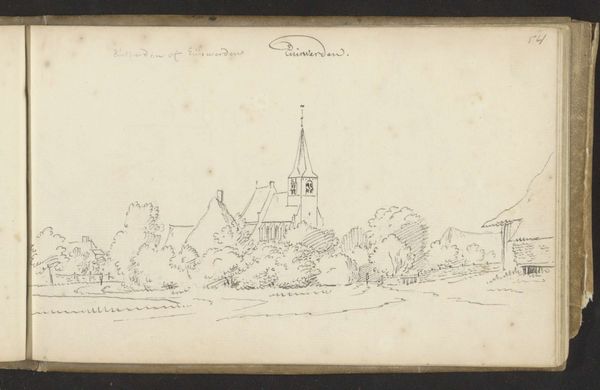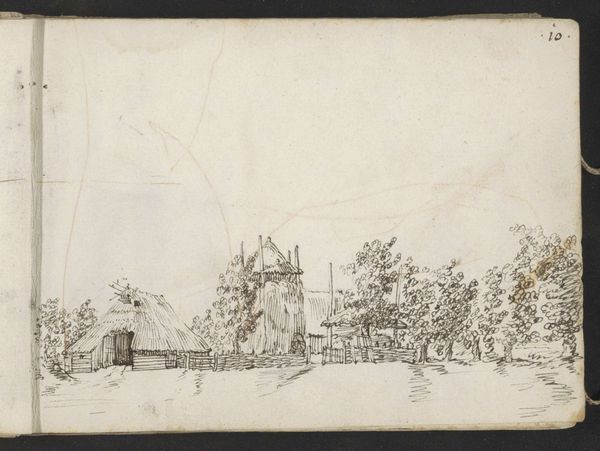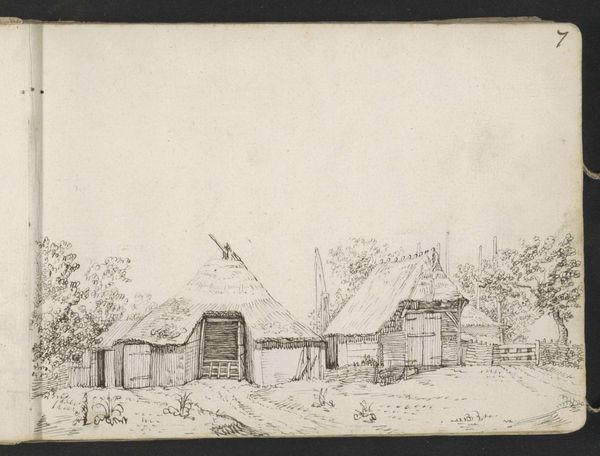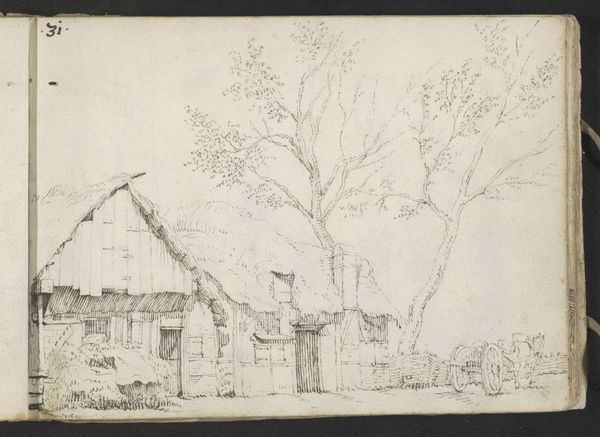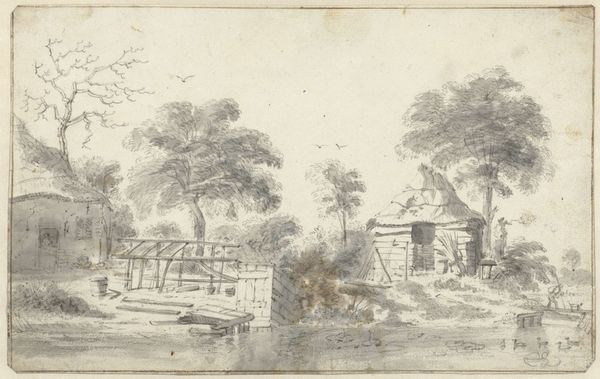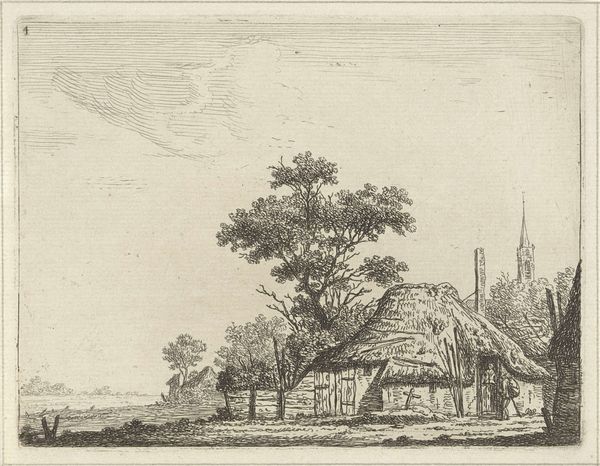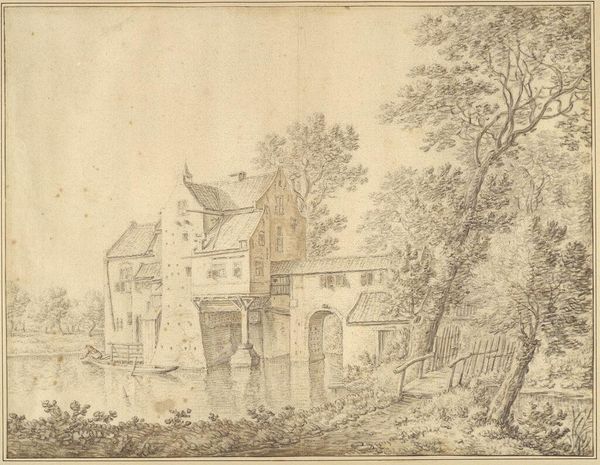
Hooischuur met op de achtergrond de de Sassenpoort te Zwolle c. 1631 - 1633
0:00
0:00
gerardteriiborch
Rijksmuseum
drawing, paper, ink, pen
#
drawing
#
aged paper
#
toned paper
#
dutch-golden-age
#
sketch book
#
landscape
#
paper
#
personal sketchbook
#
ink
#
sketchwork
#
pen-ink sketch
#
pen work
#
sketchbook drawing
#
pen
#
storyboard and sketchbook work
#
sketchbook art
Copyright: Rijks Museum: Open Domain
Curator: Gerard ter Borch the Younger created this pen and ink drawing, titled "Hooischuur met op de achtergrond de Sassenpoort te Zwolle," circa 1631 to 1633. Editor: My first impression is a quiet intimacy. The pen strokes are so delicate, yet the architecture is solid. Curator: Notice how Borch employs hatching to build up tonal depth. The density of lines around the barn creates form, and a stark contrast to the relatively empty sky, thus establishing figure and ground. Editor: The Sassenpoort looms distantly in the background. This medieval gate carries immense symbolic weight. As an entrance to the city, it signifies not just physical access, but a passage to social and economic opportunity. The barn, in contrast, evokes a slower, more agrarian way of life. Curator: I am drawn to the textures Borch evokes. The roughness of the thatched roof and timbered walls of the barn contrast so well against the smoother, distant silhouette of the gate. These contrasts contribute significantly to the visual interest of the piece. Editor: Exactly! And I see something more. The Sassenpoort stands for established power, while the humble barn reflects a grounding in nature. Is it a suggestion of social dynamics, of the artist considering different strata of society? Curator: Perhaps. We must acknowledge this is likely a sketchbook study and not a formal social commentary. What do you make of its status as sketchbook work? Editor: Sketchbooks are the keepers of fleeting inspiration, places where artists record immediate, uncensored impressions. In that sense, it's incredibly special, a window into Borch's observations, a raw and unguarded moment preserved on aged paper. Curator: Indeed. Thinking about the interplay of precise linework and ephemeral observation has truly enriched my appreciation for the piece. Editor: I agree. Delving into this snapshot of 17th-century Holland and unraveling its symbols certainly gave me much to ponder.
Comments
No comments
Be the first to comment and join the conversation on the ultimate creative platform.
